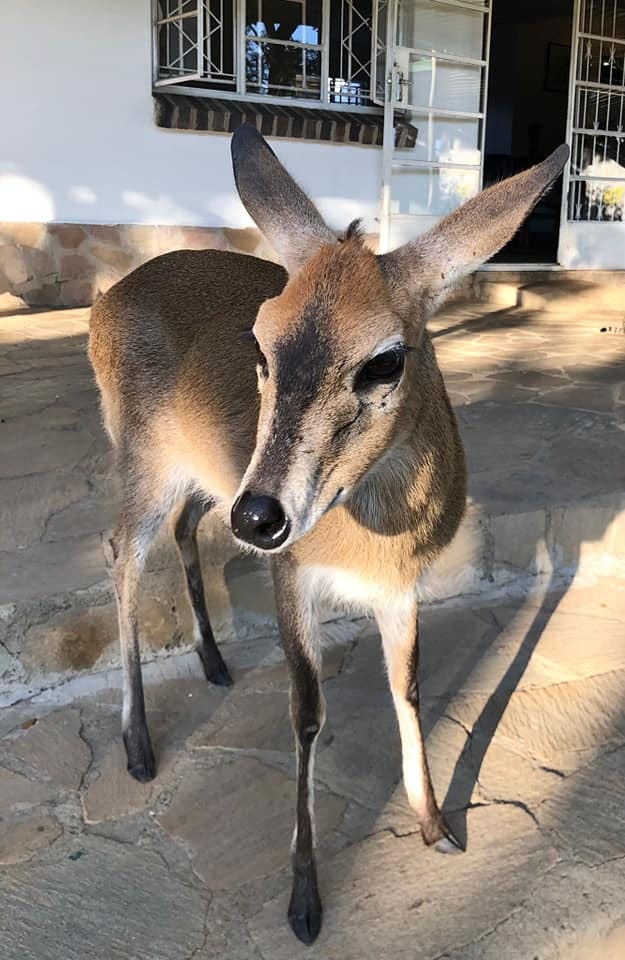
At the meditation seminars I teach, I often begin by asking for a show of hands: who is completely new to meditation? Who is a regular practitioner coming for fresh inspiration? And who is a ‘lapsed’ meditator? Along with a few rueful chuckles, the largest number of hands usually goes up for the third option!
The world is full of lapsed meditators. Why so? How did things go wrong? Or what didn’t go sufficiently right?
Training the mind has many parallels to training the body, so we may equally well ask why so many people give up on the gym? Or doing yoga? Or following any number of other exercise regimes we know to be helpful?
I’d like to offer the following suggestions to those of you whose meditation practice may feel a bit patchy, puny, or have gone completely underground. All of which are completely normal experiences. The source of the mightiest rivers are tiny springs that behave in just this way. But with time and the right methods, our meditation practice can become our own personal Mississippi, Amazon or Thames, a vital, flowing current of energy running through the centre of our life, delivering benefits beyond anything we may have conceived when we first started out.
1. Reframe your expectations
A gym I used to go to had a sign above the door saying: ‘Six weeks for you to notice. 10 weeks for your friends. 12 weeks for everyone else.’ Useful expectation management which applies equally to meditation. Letting go of the instant gratification we have come to expect in other areas of life is the most basic reframe when it comes to meditation practice.
How to do this? I suggest by relaunching your practice free of all expectation. Do it for the sake of doing it – say, fifteen minutes a day, at least five days a week. Let go of any idea of evaluation until you’ve been in a regular practice for six to twelve weeks.
That same gym had another sign that read: ‘You’re here. That’s half the battle.’ - equally applicable to our meditation cushions. The simple act of showing up, cultivating the habit, is the part that demands self-discipline.
It’s when we keep on keeping on, without hope or expectation, that the magic starts to happen.
2. Use appropriate yardsticks to monitor progress
What magic might we experience? We may think that if our main meditation practice is, say, placing our minds on the breath, then progress means that we can place our minds on our breath for longer and longer periods of time, without distraction or dullness.
Unfortunately, we are unlikely to see such progress early on. It’s quite common for people to believe that their concentration, in the early weeks, actually gets worse. This is because we are only starting to get glimpses of our mind as it truly is – and it ain’t pretty!
As a woman at a recent seminar said, with some exasperation, “It’s like I have whole different levels of mental activity going on at the same time!” Same for all of us, I reassured her. Unless we meditate, chances are that we have many unchallenged illusions about the state of our own mind. The apparently innocuous act of sitting on a cushion opens us up to the most blindsiding recognition of how out of control our minds really are.
If improved concentration doesn’t happen right away, what is a useful yardstick? Again, I’d like to point to the physical training model. As our physical health improves, we can expect an improved ability to carry heavy grocery bags without as much effort, walk briskly for longer if we’re in a hurry, and so on. We may not yet have bulging biceps, but the relatively small amount of time we spend at the gym makes us far better able to deal with everything else life throws our way, physically speaking.
In just the same way, our mental muscles may have yet to emerge, but the relatively small amount of time we spend meditating makes us far better able to deal with whatever life throws our way mentally and emotionally speaking. We are better able to deal with stress. Perhaps we are, if only fractionally, less quick to anger. Better able to deal with the slings and arrows of outrageous fortune without feeling quite so riled up, frustrated or despairing. Our daily life may be unchanged, but we may live it with greater equanimity.
In the words of the Indian sage Shantideva: “I can’t cover the world with leather to avoid stepping on thorns, but I can wear leather on the soles of my feet.” We can’t change reality, in other words, but we can change the way we experience it.
Along with improved stress management, other early indicators of progress are enhanced clarity and creativity arising from somewhat less thought pollution. Opportunities and ideas that may have been staring us in the face, now become “magically” apparent.
Also, you may have scattered moments of intensity through the day when the coffee tastes more coffee-ish, the sunset is more gorgeous, music is more emotionally charged. Why? Dampened down cognitive chatter frees up our mental bandwidth to more vividly experience what’s already there.
Meditation practice is sometimes likened to a smallholding, where we start out cultivating fruit trees and seasonal vegetables. Concentration, like the fruit trees, will take years to mature, so let’s not keep looking for signs of fruit. But there are plenty of seasonal vegetables to enjoy in the meantime, which can deliver more immediate, life-enhancing benefits – sometimes where we least expect them.
3. Find the practice that best suits you
‘Meditation’ is like the word ‘sport,’ encompassing a very wide range of practices. Finding the practice that best works for you can make all the difference. If you have been introduced only to a mantra-based form of meditation, and it didn’t initially resonate, perhaps try one of the many breath-based varieties. If you’re a creative person, visualisations may offer a wonderfully accessible dimension of practice.
This doesn’t make our previous meditation practice worthless. We may want to put it to one side, or include it in our timetable once a week. In time, as concentration improves and we are familiar with different types of practices, we become more confident all-rounders. What’s important, getting back onto the cushion, is to find practices that we can take some satisfaction in, something that feels worthwhile doing. Once we do, in time it will open the door to all other practices.
4. Adopt the optimal form
Just as our objective at the gym may be to pick up a 90 pound/40 kilo weight, how we pick it up also matters if we don’t want to do ourselves serious injury. In meditation, form is equally important. By this, I don’t mean our physical posture - I’m taking that as a given - but our mental form, the attitude we bring to the practice.
Life may have required us to learn to drive, study for exams, work at a high professional level or do many things requiring concentration. In the mundane world we may be good at focus. Alas, meditation is a different kettle of fish. It’s not only a longer haul compared to many other forms of concentration, where we can get by using bursts of concentration, but it’s qualitatively different too. Sure, we are doing something, in the sense that we may be trying, for example, to keep our attention placed on our breath. But unlike conventional concentration, forcible attention when applied to meditating gets us only so far. This is because we also need to relax. To cultivate a sense of playful spaciousness. Along with the doing – which many people are pretty good at – we are also being.
The hallmark of highly seasoned meditators is a manifestation of this lightness of being, an almost childlike wonder of the kind we find in masters like the Dalai Lama, Jetsunma Tenzin Palmo and Thich Nhat Hanh. Some people refer to this, paradoxically, as ‘beginner’s mind’ – the ability to experience things with a vivid freshness as if for the first time.
American psychologist William James noted that involuntary attention, when we feel genuinely curious about something, is energising and highly sustainable compared with voluntary attention, when we turn our attention to something as an act of deliberation. Finding our form, our inner child, our way of being, makes all the difference between meditation being engaging and gently uplifting, rather than a tedious chore on the daily ‘to do’ list.
5. Know that you can!
Just as regular effort at the gym can only deliver results, so must regular meditating. The practices work. They’ve been successfully used for thousands of years by millions of people. And yes, they will work for you too, dear reader!
I sometimes meet people socially who quiz me about meditation before saying things along the lines: “I tried meditating once. Didn’t work for me – my mind is just too busy.” I will generally smile knowingly and move the subject on. But what I have just heard is no different from: “I tried going to the gym once. Didn’t work for me – my body is just too puny.”
There are many people who seem truly to believe that they have uniquely frenetic minds. They see meditation as the province of those blessed with some preternatural talent to slip effortlessly into Zen-like calm. But it really isn’t like that, neither the unique freneticism nor the special talent. We are all in the same boat – i.e. obsessive-compulsive thinkers. Thought huggers. People in thrall to our own inner chatter - especially the negative kind! Exactly how obsessive-compulsive is hardly the point. It’s not where we start that matters but where we end up.
This all-too-fleeting human experience presents us with an unparalleled opportunity to evolve. To understand the nature of consciousness, not as a theoretical construct, but as an experiential reality. And in so doing, to discover that, however it may seem, our experience of reality is something over which we are already exercising dramatically more control than we may have believed. Wouldn’t it be better to take conscious control of this process?
If we wish for a different reality, the starting point is by getting onto the cushion, softening our gaze and resting as gently, playfully and non-judgmentally as we can in the eternal present.
Summary
Five key insights for lapsed meditators:
Reframe your expectations: meditation is a long-term endeavour. Try to cultivate a practice for six to 12 weeks without expectations of a result.
Use appropriate yardsticks to monitor progress: don’t expect your concentration to improve initially. Rather look for improved experiences of stress-management, ‘aha’ moments, and finding joy in everyday things.
Find the practice that best suits you: meditation is not one-size-fits-all. Try out different practices to see which resonate with you.
Adopt the optimal form: try not only to do, but also just to be. Go for curiously engaged rather than determinedly forceful. See if meditation can be a fresh, daily adventure rather than a ‘tick that box’ chore.
Know that you can: others have. You’re not that different. This is the journey of a lifetime - it will keep getting better and better!
Feel free to explore the non-fiction books I have written: Hurry Up and Meditate and Mindfulness is better than Chocolate. Both are available online and from regular bookstores.
I began this Substack newsletter with two main motivations. One is to pass on the life enhancing wisdom and practices I have learned from my own teachers. The other is to raise funds for causes I am passionate about.
These include: Wild is Life - home to endangered wildlife and the Zimbabwe Elephant Nursery; Twala Trust Animal Sanctuary - supporting indigenous animals as well as pets in extremely disadvantaged communities; Dongyu Gyatsal Ling Nunnery - supporting Buddhist nuns from the Himalaya regions; Gaden Relief - supporting Buddhist communities in Mongolia, Tibet, Nepal and India.
Some pics in this week from Twala Trust:
A mother cat and six kittens who were dumped at the Twala gate - now benefiting from the gentle care of Swiss volunteers
Layla the duiker, a favourite with volunteers and good treat hustler!
Rhonda the night ape/bushbaby. Who needs gremlins when you live in Zimbabwe?!
If you are able to become a paying subscriber to help these, and so many other beings who desperately need our support, please do! Every single subscription makes a difference.






Thanks for this reminder! I also found the part of your books where the Dalai Lama points out to the painter that his incredible focus/mindfulness and mental quiet while he is painting is, effectively, a form of meditation.
There was a comedian I was listening to the other day that commented that pre-mobile-phone, we all practiced mindfulness often, which is why (he claimed) we talk so much about it now vs in the 80s. He joked how when we use to wait, we actually just sat quietly and waited (watching the paint peel), when we rode the bus we just sat on the bus watching someone's nose drip, and when we pooped, we just sat quietly and pooped. Well, he did have a point.
Personally, I needed the reminder that without meditation, I'm assuming my mind is calm (ha!) and without that discipline, not checking in regularly, I honestly don't know.
I so appreciate your work!
David, Thank you for this wisdom…As a very calm person by nature, my personal beautiful meditation practice is Kinhin, a walking meditation. There have been so many unexpected gifts and benefits that have come from my practice…Aside from reducing my mind chatter throughout the day it’s when I’m most” living in the now,” bringing in clarity , focus and I believe enhances my creativity. Because I live in nature vs busy city noise it never fails to open my heart to gratitude for such a blessing of peace and quiet not only for my life but for the ability to be part of the beauty around me .Sometimes I feel one with the leaves of the trees or the pine cones highest on the tallest of trees opening to the sun or closing in the rain…perhaps meditation brings us closer to Source Energy, a happiness that can’t be defined with mere words…one of the joys of life really! ❤️ Adrienne